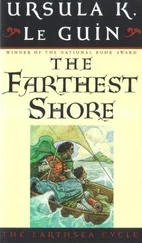1 ...6 7 8 10 11 12 ...36 “From my experience of three seasons in the Antarctic regions I do not think that a ship, of whatever build, could long resist destruction if committed to the movements of the pack in the polar regions. One built as strongly as the Fram would no doubt resist great pressures in the open pack, but not any pressure or repeated pressures, and still less the thrust of the pack if driven with or by it against land. The lines of the Fram might be of service so long as she was on an even keel or in ice of no great height above the water-line; but amongst floes and bergs, or when thrown on her beam-ends, they would avail her nothing.”
If the Fram were to drift towards the Greenland coast or the American polar islands he is of opinion that, supposing a landing could be effected, there would be no probability at all of salvation. Assuming that a landing could be effected, it must be on an inhospitable and probably ice-bound coast, or on the mountainous ice of a palæocrystic sea. With a certainly enfeebled, and probably reduced ship’s company, there could, in such a case, be no prospect of reaching succor. Putting aside the possibility of scurvy (against which there is no certain prophylactic), have the depressing influence on the minds of the crew resulting from long confinement in very close quarters during many months of darkness, extreme cold, inaction, ennui, constant peril, and the haunting uncertainty as to the future, been sufficiently taken into account? Perfunctory duties and occupations do not avert the effects of these conditions; they hardly mitigate them, and have been known to aggravate them. I do not consider the attainment of Dr. Nansen’s object by the means at his disposal to be impossible; but I do consider that the success of such an enterprise would not justify the exposure of valuable lives for its attainment.
In America, General Greely, the leader of the ill-fated expedition generally known by his name (1881–84), wrote an article in The Forum (August, 1891), in which he says, among other things: “It strikes me as almost incredible that the plan here advanced by Dr. Nansen should receive encouragement or support. It seems to me to be based on fallacious ideas as to physical conditions within the polar regions, and to foreshadow, if attempted, barren results, apart from the suffering and death among its members. Dr. Nansen, so far as I know, has had no Arctic service; his crossing of Greenland, however difficult, is no more polar work than the scaling of Mount St. Elias. It is doubtful if any hydrographer would treat seriously his theory of polar currents, or if any Arctic traveller would indorse the whole scheme. There are perhaps a dozen men whose Arctic service has been such that the positive support of this plan by even a respectable minority would entitle it to consideration and confidence. These men are: Admiral M’Clintock, Richards, Collinson, and Nares, and Captain Markham of the Royal Navy, Sir Allen Young and Leigh-Smith of England, Koldewey of Germany, Payer of Austria, Nordenskiöld of Sweden, and Melville in our own country. I have no hesitation in asserting that no two of these believe in the possibility of Nansen’s first proposition—to build a vessel capable of living or navigating in a heavy Arctic pack, into which it is proposed to put his ship. The second proposition is even more hazardous, involving as it does a drift of more than 2000 miles in a straight line through an unknown region, during which the party in its voyage (lasting two or more years, we are told) would take only boats along, encamp on an iceberg, and live there while floating across.”
After this General Greely proceeds to prove the falsity of all my assumptions. Respecting the objects from the Jeannette , he says plainly that he does not believe in them. “Probably some drift articles were found,” he says, “and it would seem more reasonable to trace them to the Porteus , which was wrecked in Smith Sound, about 1000 miles north of Julianehaab... It is further important to note that, if the articles were really from the Jeannette , the nearest route would have been, not across the North Pole along the east coast of Greenland, but down Kennedy Channel and by way of Smith Sound and Baffin’s Bay, as was suggested, as to drift from the Porteus .”
We could not possibly get near the Pole itself by a long distance, says Greely, as “we know almost as well as if we had seen it that there is in the unknown regions an extensive land which is the birthplace of the flat-topped icebergs or the palæocrystic ice.” In this glacier-covered land, which he is of opinion must be over 300 miles in diameter, and which sends out icebergs to Greenland as well as to Franz Josef Land, 13the Pole itself must be situated.
“As to the indestructible ship,” he says, “it is certainly a most desirable thing for Dr. Nansen.” His meaning, however, is that it cannot be built. “Dr. Nansen appears to believe that the question of building on such lines as will give the ship the greatest power of resistance to the pressure of the ice-floe has not been thoroughly and satisfactorily solved, although hundreds of thousands of dollars have been spent for this end by the seal and whaling companies of Scotland and Newfoundland.” As an authority he quotes Melville, and says “every Arctic navigator of experience agrees with Melville’s dictum that even if built solid a vessel could not withstand the ice-pressure of the heavy polar pack.” To my assertion that the ice along the “Siberian coast is comparatively thin, 7 to 10 feet,” he again quotes Melville, who speaks of ice “50 feet high, etc.” (something we did not discover, by-the-way, during the whole of our voyage).
After giving still more conclusive proofs that the Fram must inevitably go to the bottom as soon as it should be exposed to the pressure of the ice, he goes on to refer to the impossibility of drifting in the ice with boats. And he concludes his article with the remark that “Arctic exploration is sufficiently credited with rashness and danger in its legitimate and sanctioned methods, without bearing the burden of Dr. Nansen’s illogical scheme of self-destruction.”
From an article Greely wrote after our return home, in Harper’s Weekly for September 19th, 1896, he appears to have come to the conclusion that the Jeannette relics were genuine and that the assumption of their drift may have been correct, mentioning “Melville, Dall, and others” as not believing in them. He allows also that my scheme has been carried out in spite of what he had said. This time he concludes the article as follows: “In contrasting the expeditions of De Long and Nansen, it is necessary to allude to the single blemish that mars the otherwise magnificent career of Nansen, who deliberately quitted his comrades on the ice-beset ship hundreds of miles from any known land, with the intention of not returning, but, in his own reported words, ‘to go to Spitzbergen, where he felt certain to find a ship,’ 600 miles away. De Long and Ambler had such a sense of honor that they sacrificed their lives rather than separate themselves from a dying man, whom their presence could not save. It passes comprehension how Nansen could have thus deviated from the most sacred duty devolving on the commander of a naval expedition. The safe return of brave Captain Sverdrup with the Fram does not excuse Nansen. Sverdrup’s consistency, courage, and skill in holding fast to the Fram and bringing his comrades back to Norway will win for him, in the minds of many, laurels even brighter than those of his able and accomplished chief.”
One of the few who publicly gave to my plan the support of his scientific authority was Professor Supan, the well-known editor of Petermann’s Mitteilungen . In an article in this journal for 1891 (p. 191), he not only spoke warmly in its favor, but supported it with new suggestions. His view was that what he terms the Arctic “wind-shed” probably for the greater part of the year divides the unknown polar basin into two parts. In the eastern part the prevailing winds blow towards the Bering Sea, while those of the western part blow towards the Atlantic. He thought that, as a rule, this “wind-shed” must lie near the Bering Sea, and that the prevailing winds in the tracts we purposed traversing would thus favor our drift. Our experience bore out Professor Supan’s theory in a remarkable degree.
Читать дальше












